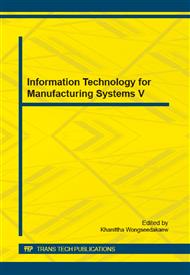[1]
DU Hong-bing, LIU Ming, JIN Hui-bin. Study on a Structured Pilot Error Model based on Information Processing and Accident Chain Principle. [J]. China Safety Science Journal, 2011, 21(6): 25-31. (in Chinese).
Google Scholar
[2]
SUN Shu-gang. Accident Causation Chain Analysis of Vessel Collision [D]. Dalian: Dalian Maritime University, 2010. (in Chinese).
Google Scholar
[3]
DONG Wen-feng. Vessel Collision Brittleness Analysis based on Survey Reports [D]. Dalian: Dalian Maritime University, 2012. (in Chinese).
Google Scholar
[4]
LIU Jun, Eli ISM UTULLA, MA Xiao-song. Traffic Accident Analysis based on Data Mining Technology [J]. Traffic and Computer, 2008, 26 (1): 73-76. (in Chinese).
Google Scholar
[5]
IMO. Guidelines for the Investigation of Human Factors in Marine Casualties and Incidents [R]. London: IMO. (1999).
Google Scholar
[6]
Sidney Dekker. The Field Guide to Human Error Investigations [M]. Michigan: University of Michigan, (2002).
Google Scholar
[7]
LIU Hong-bin. Discuss of Human Factor in Vessel Collision Accident [J]. Marine Technology, 2008(4): 8-10. (in Chinese).
Google Scholar
[8]
CHE Jun. The Analysis and Evaluation of Human Factors for Ship Collision Avoidance [D]. Dalian: Dalian University of Technology, 2010. (in Chinese).
Google Scholar
[9]
XI Yong-tao, HU Shen-ping. Model of Performance Shaping Factors in Marine Human Reliability Analysis [J]. Navigation of China, 2012, 35(1): 66-70. (in Chinese).
Google Scholar
[10]
lSAAC A, TSHORROCK S, KENNEDY R, et al.The Human Error in ATM Technique (HERA-JANUS) [R].Human Factors and Manpower Unit (DIS/HUM), 2003: 13.
Google Scholar
[11]
DONG Lei-lei. Modeling Emergency Events Chain based on Bayesian Networks [D]. Dalian: Dalian University of Technology, 2009. (In Chinese).
Google Scholar
[12]
GUO Tao, ZHANG Dai-yuan. Research and Application on Association Rules based on Apriori Algorithm [J]. Computer Technology and Development, 2011, 21(6): 101-103. (in Chinese).
Google Scholar
[13]
WANG Yan-hua, XIA Feng. The Optimization of Apriori Algorithm based on Directed Network [C] /Proceedings of the 3rd International Symposium on Intelligent Information Technology Application. Washington DC: IEEE Computer Society, 2009: 504-507.
DOI: 10.1109/iita.2009.56
Google Scholar


